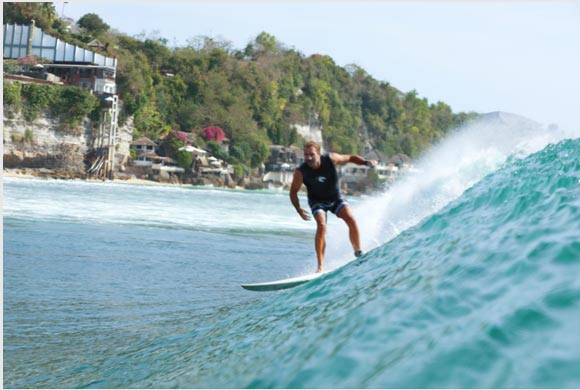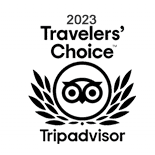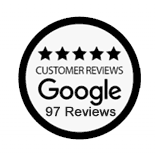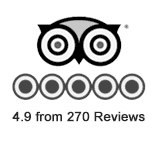SURF , WAVE, SWELL AND BREAK TERMINOLOGY

SURF, WAVE, SWELL AND BREAK TERMINOLOGY
THE ULTIMATE WAVE GUIDE
Topics covered and explained in the Surf, waves, swell and break terminology:
- Understanding Swell
- Ground Swell
- Wind Swell
- Understanding Wave Formation
- Concave Refraction
- Convex Refraction
- Understanding Surf Breaks
- Beach Break
- Point Break
- Reef Break
- Wave anatomy
- The Peak
- The Shoulder
- The Face/ Wall
- The Lip
- The Channel

To a non-surfer, a wave is just a wave. In actuality, waves are like fingerprints; no two are alike. The same is true for wave setups; no single break is exactly the same as another one anywhere in the world. In order to improve one’s skills, a surfer must have a firm grasp on wave mechanics and an in-depth knowledge of a variety of different types of surf breaks.
WAVE GUIDE
To understand surf breaks and wave mechanics, we must look at how waves are formed by swell and where swell comes from.
UNDERSTANDING SWELL
The sun is the origin of all surf. Solar energy creates wind, and winds blow across vast areas of open ocean to create energy that eventually organizes itself into swell.
When swell travels great distances or combines with other swells, it can increase in size and interval. There are two types of swell that cause surf, groundswell, and wind swell.
GROUND SWELL

Groundswell is the type of swell surfers hope and pray for; it often creates large and powerful surf.
Groundswell is created by large storm and weather systems or strong wind blowing over long distances of open ocean. Groundswell can travel for thousands of miles, and the wave energy can reach up to 1,000 feet in depth. Ground swells typically produce long interval swell and large surf once they make landfall.
WIND SWELL

Wind swell is created by less powerful, more localized wind systems.
The wave energy from wind swells do not run as deep, and they only travel short distances across open ocean.
The result is usually smaller surf with a shorter interval.
UNDERSTANDING WAVE FORMATION

When swell finally reaches shallow water- whether that be a continental shelf, a reef system, or a sand bar- it is slowed and finally releases its energy in the form of breaking waves.
When swell bends horizontally as it breaks, it is called refraction. Refraction steers swell towards or away from shore. Some coves on the same coast during the same swell can have pumping waves while others are as calm as lakes.
This occurrence is caused by the varying ocean floor contours that cause different types of refraction. There are two types of refraction that can occur, depending on the ocean floor topography, concave refraction, and convex refraction.
CONCAVE REFRACTION
When open ocean swell comes into contact with an abrupt, protruding change in the ocean floor that is surrounded by deeper water- often a reef or sand bar- the swell will bend at its far ends as it turns into a breaking wave.
The center portion of the swell is slowed by the protrusion. The result resembles a bowl shape that travels towards the shore, with the “opening of the bowl” facing the shore.
CONVEX REFRACTION
When open ocean swell collides with a protruding headland, such as a cliff, jetty, or even a pier, the portion of swell confronting the headland slows, while the rest of the line of swell continues forward at pace.
The result closely resembles a “C” shape with the curved side moving towards the shore. This is known as convex refraction, and it nearly mirrors concave refraction in appearance.
UNDERSTANDING SURF BREAKS
Beyond refraction, ocean floor topography plays a role in determining how a wave breaks, not just how it bends. Surf breaks are categorized in three different ways: beach breaks, reef breaks, and point breaks. Understanding the differences between surf breaks is key to not only progressing as a surfer but staying safe in the water.
At Swell Surf Camp, our clients have access to a variety of surf break types that will match their surf skill level. The Dominican Republic is home to a vast system of reef and beach breaks.
BEACH BREAK

If you’re a first-time surfer, it’s best to find a mellow beach break to learn. Beach breaks are typically the safest types of surf break. Incoming swell breaks over sand bars versus harsh rocks or reef.
The shape and size of the wave are directly influenced by the sand bars that are constantly shifting. Beach breaks typically offer a variety of peaks compared to reef or point breaks that might only have one take off zone.
POINT BREAK

Point breaks, as the name suggests, are waves that break on a point, a protruding land mass that is perpendicular to the wave’s direction.
This point can be natural or manmade, such as a jetty. The wave at most point breaks is slow forming and offers surfers a long ride with a carve-worthy wall. Point breaks are great for surfers who are looking to progress and learn to carve / turn.
REEF BREAK

A reef break is created by a wave breaking over a rock or coral formation under water. Reef breaks can either have submerged reef or exposed reef.
A submerged reef is a rock formation that has been covered by sand. Submerged reefs are typically safer to surf over than any other type of reef. The exposed reef is often sharp and dangerous to step on. Additionally, reef systems can have other hazards, like sea urchins.
Reef breaks do, however, offer a consistent peak and wave shape that you would not find at a beach break.
WAVE ANATOMY
In order to successfully catch and ride waves, a surfer must comprehend basic wave anatomy. Where should you take off? What parts of the wave have the most speed? Where is a safe place to wait for incoming surf? All of these questions can be answered by digging a little deeper into the anatomy of a wave.
THE PEAK
One mistake many first-time surfers make is paddling for any incoming wave no matter where they are positioned compared to the peak. The peak of a wave is its highest point and the ideal take-off point for surfers. A wave begins to break at the peak making it the steepest portion of the wave and the easiest place to take off.
THE SHOULDER
The shoulder of a wave is a flatter and more mellow section of the wave that sits down the line from the peak. The shoulder is a great place to sit and watch your friends score waves.
THE FACE/ WALL
The face or wall of a wave is the steep, vertical section of a breaking wave just in front of the “pocket.” Our goal as surfers is to ride on the face of the wave just in, or slightly in front of, the pocket. Once a surfer gets too far down the face of the wave (closer to the shoulder), they cut back so that they can ride in the pocket of the wave. Beginner surfers will find that their rides will be cut short if they ride in front of the face of the wave, rather than on it. The vertical section of the wave has the most power.
THE LIP
The lip of the wave is the cresting portion that comes down as the wave breaks. With offshore wind and a decent sized swell, surfers can pull into barrels behind the lip of the wave.
THE CHANNEL
While the channel is not technically part of the wave, it is vital to a surfer’s ability to paddle out. Paddling out can be difficult, especially in large surf. The channel is where all of the incoming surf flows back into the sea. This is the best place to paddle out, as it is often calmer than other parts of the break.
LEARNING MORE ABOUT WAVES
The most effective way to learn about waves, different surf breaks, and varying surf conditions is to surf as much and as often as possible. At Swell Surf Camp, we not only teach our clients to surf in the warm Caribbean Sea, but we provide the ultimate surf experience through stellar lodging, tasty food, and a welcoming community.
-
WHERE IS SWELL LOCATED?
Swell Surf camp is located on the North coast of the Dominican Republic, right in the center of the cool surfer town of Cabarete. With 3 international airports to choose from it's also one of the easiest places to get to for a quick surf getaway. Puerto Plata Airport is only 25 minutes away from Swell. On the' getting here' page you'll find the different options of getting to us.
-
ABOUT SWELL SURF CAMP
Founded in the winter of 2009, Swell Surf Camp emerged from Jeroen and Clare Mutsaars vision. They lived in the Dominican Republic for eight years and spotted a gap in the surf camp market for higher quality accommodations combined with an engaging social atmosphere. Their extensive travel and stay experiences across different countries like Costa Rica, Nicaragua, Peru, Hawaii, Indonesia and various European nations fueled their passion to elevate the surfing retreat experience.
Swell Surf Camp is renowned as the world’s first luxury surf camp tailored specifically for beginners. The founders collaborated with a notable Swiss architect to design facilities that blend comfort with style. This innovative approach ensures every guest enjoys superior lodging and amenities. Since its inception, Swell has taught over 9,000 people how to surf with an emphasis on safety, fun, and structure.
Our achievements speak volumes. Swell has collected numerous accolades and maintains hundreds of stellar reviews from guests globally. Recognized repeatedly as the leading destination for luxury surf vacations, our commitment to excellence keeps us at the forefront of the industry.
Beyond surfing, Swell offers a diverse range of activities including kitesurfing, wingfoiling, and yoga classes. Guests can also enjoy horse riding both on scenic beaches and mountain trails—plus exciting adventure-filled excursions like canyoning.
A crucial element of any vacation is food, and here at Swell we excel. We provide delicious home-cooked meals daily. For evenings out, guests find themselves just minutes away from an array of dining options that promise satisfying culinary adventures.
For those who prioritize upscale amenities and wellness in a unique setting built around learning surf skills amid profound natural beauty, Swell should be on the top of your surf destination list
-
WHAT TO EXPECT FROM A 1 WEEK LEARN TO SURF HOLIDAY
Dreaming of catching your first wave but wondering if surf lessons are really for you? At Swell Surf Camp, our lessons are designed specifically for beginners, and we mean absolute beginners, particularly those between 40 and 55 from cities like New York, Boston, or Toronto. You’ll never feel rushed, lost, or out of place. Our expert instructors genuinely love teaching, and their approach is as much about encouragement as it is about skill-building. Every instructor carefully tunes each lesson to fit one person, you, so you always get personalized support, whether you’re working on basic paddling, learning to pop up, or building confidence in the water.
The journey at Swell Surf Camp is about progression, not perfection. You’ll start with the very basics, practicing on the sand before moving into gentle ocean waves with your instructor right beside you. Throughout every lesson, our focus is on clear communication, safety, and keeping things fun. As you progress, our instructors give you feedback in real-time, helping you celebrate small wins and guiding your next steps. You’ll learn solid surfing foundations, water safety, and even the unwritten rules of surf culture. By the end of your stay, you’ll be amazed at your own growth and how natural surfing feels. Don’t wait to discover how transformative a single lesson can be, book your surf adventure at Swell Surf Camp and let your surfing journey begin!
-
WHAT SPORTS DOES SWELL OFFER?
It's not only surfing that's on offer at Swell, we also offer learn to wingfoil and learn to kitesurf packages.




